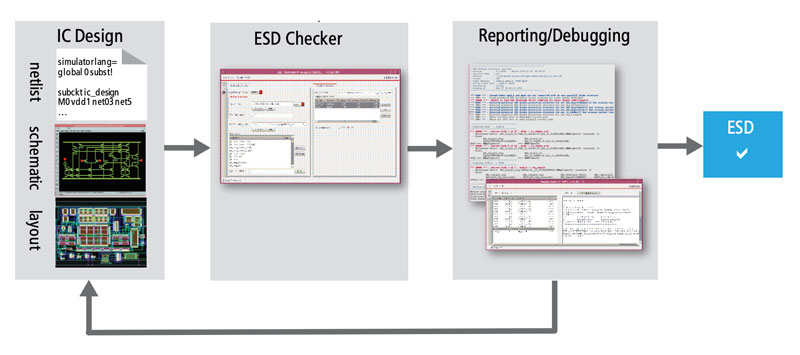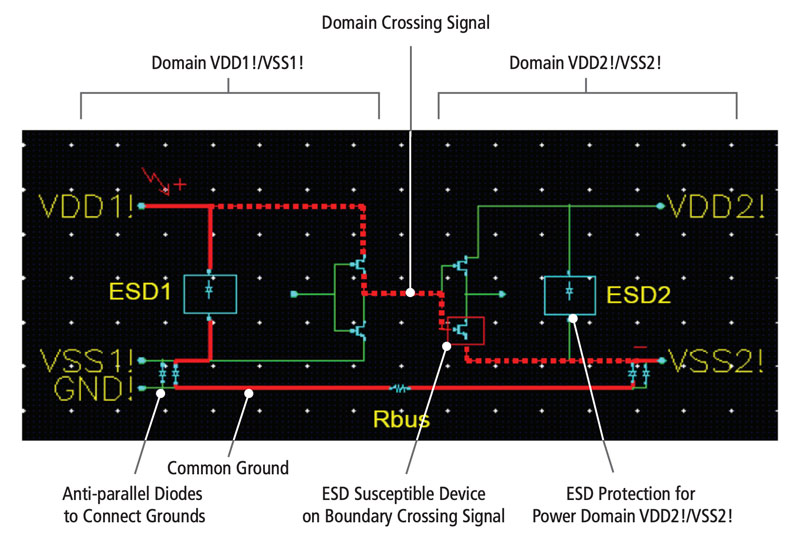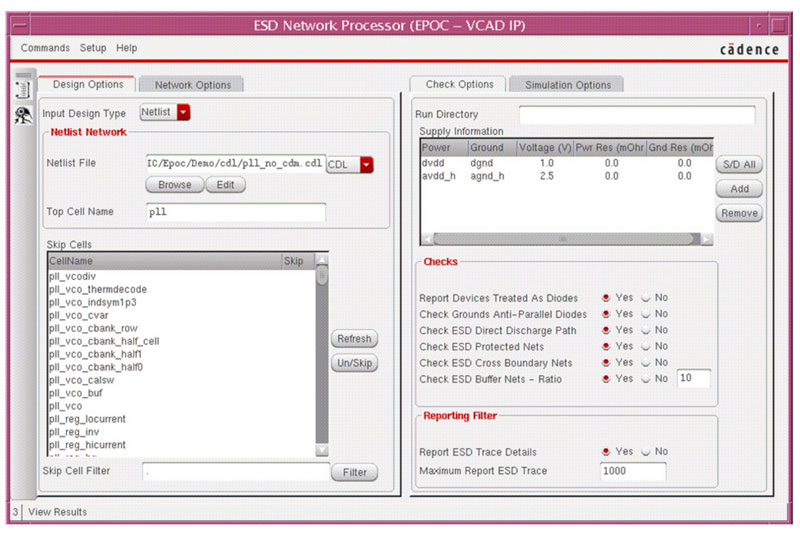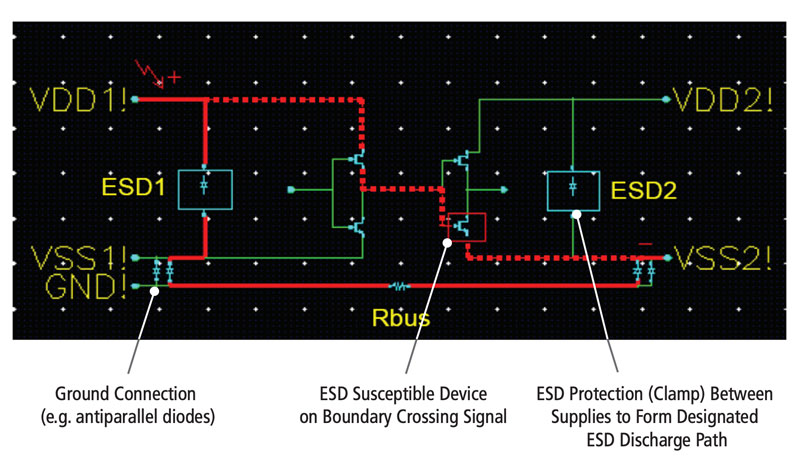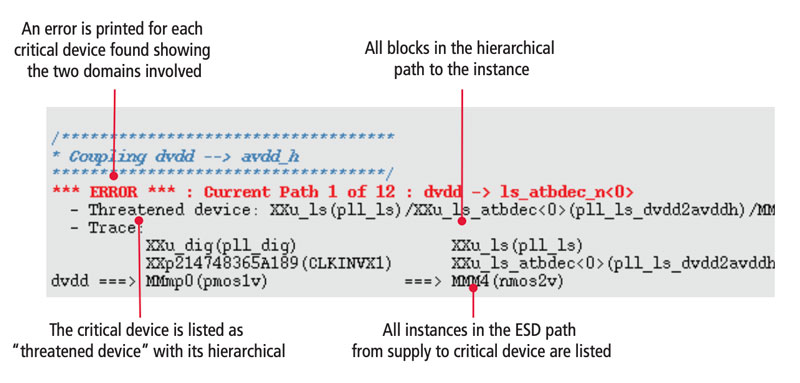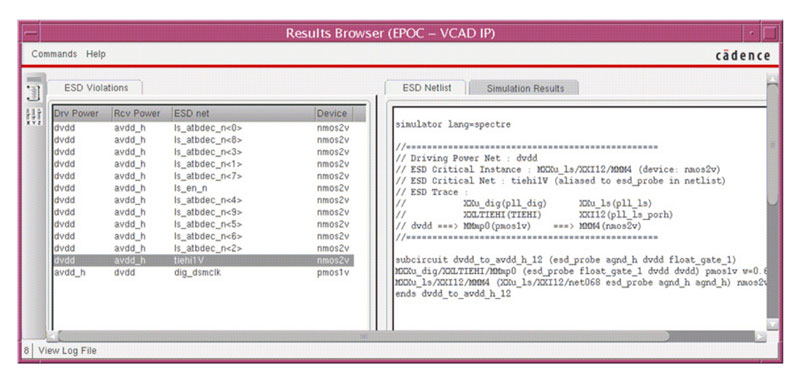Datasheet
ESD Cross Domain Checker
VCAD Productivity Package for Virtuoso
The verification of electrostatic discharge (ESD) protection in today’s IC designs is challenging and, because it is mostly done manually, it is also error prone. The Cadence VCAD Services ESD Cross Domain Checker addresses the verification of sufficient ESD protection of devices on power domain crossing signals, which is often overlooked but increasingly important for sub100nm processes on large systems-on-chip (SoCs). The solution also applies checks for basic ESD protection.
Overview
Overview
The ESD checker operates on CDL or SPICE netlists and schematics or extracted layouts (av_extracted views).
The checker identifies and flags devices on domain crossing signals. The solution also checks designs to verify ground coupling and the existence of ESD clamping on all power domains.
For identified critical elements, the tool generates corresponding ESD sub-networks as Cadence Spectre netlists to ease simulations.
The ESD Cross Domain Checker relies on the following Cadence tools:
The Implemented Checks
The main functionality of the tool is to report for ESD susceptible devices alongside associated ESD discharge paths. Figure 4 shows an ESD susceptible device and correctly placed ESD clamps and ground connection.
ESD Simulations of Critical Sub Networks
The ESD Checker helps prepare ESD simulations. It extracts the critical path from supply to supply (shown in Figure 2 as a dotted line) as a Spectre netlist. This netlist can now be incorporated in a testbench and simulated to see the effect of an ESD pulse on the transistor at the boundary crossing signal to further evaluate whether a dedicated protection on this signal is needed.
By activating the menu item Commands->View Results from the tool interface, you can bring up the Results Browser (Figure 7). It lists all critical devices found - under the tab ESD Violations. Selecting a violation displays the relevant netlist in the right half under tab, ESD Netlist.
VCAD Productivity Packages
VCAD Productivity Packages are a set of pre-packaged generic core solutions that increase design system productivity. Productivity Packages are available within services contracts, which include the package integration and maintenance of the customized solution. Cadence VCAD services targets the development, implementation, and ongoing improvement and maintenance of productive design systems to ensure short time to market and silicon success.
The EPOC tool is delivered by VCAD Services. For more information please contact:
Louis Thiam
Tel.: +49 89 4563 1957
E-mail: thiam@cadence.com
Steffen Lorenz
Tel.: +49 89 4563 1936
E-mail: lorenz@cadence.com
Cadence Design Systems GmbH
Mozartstrasse 2 85622 Feldkirchen
Germany

